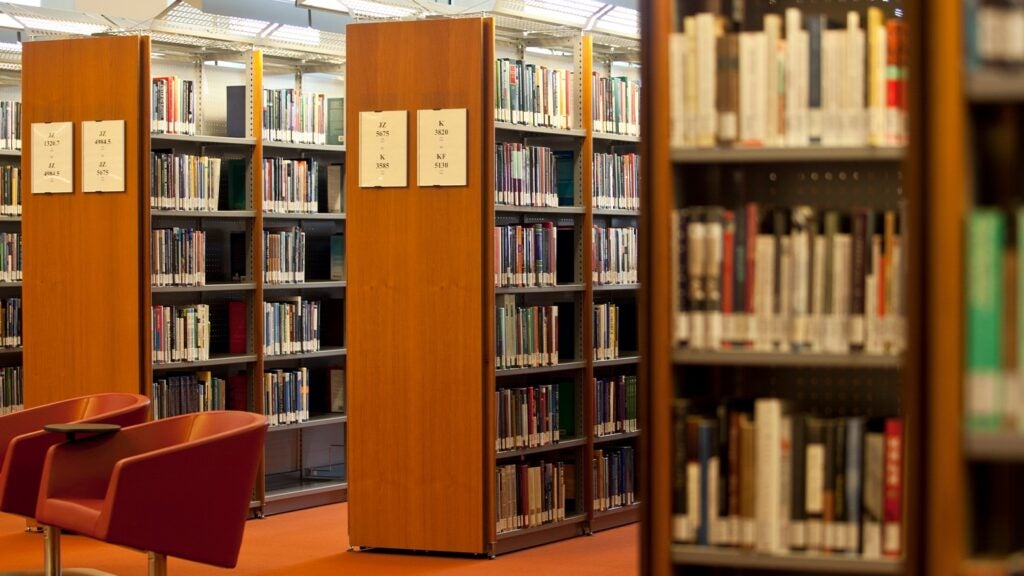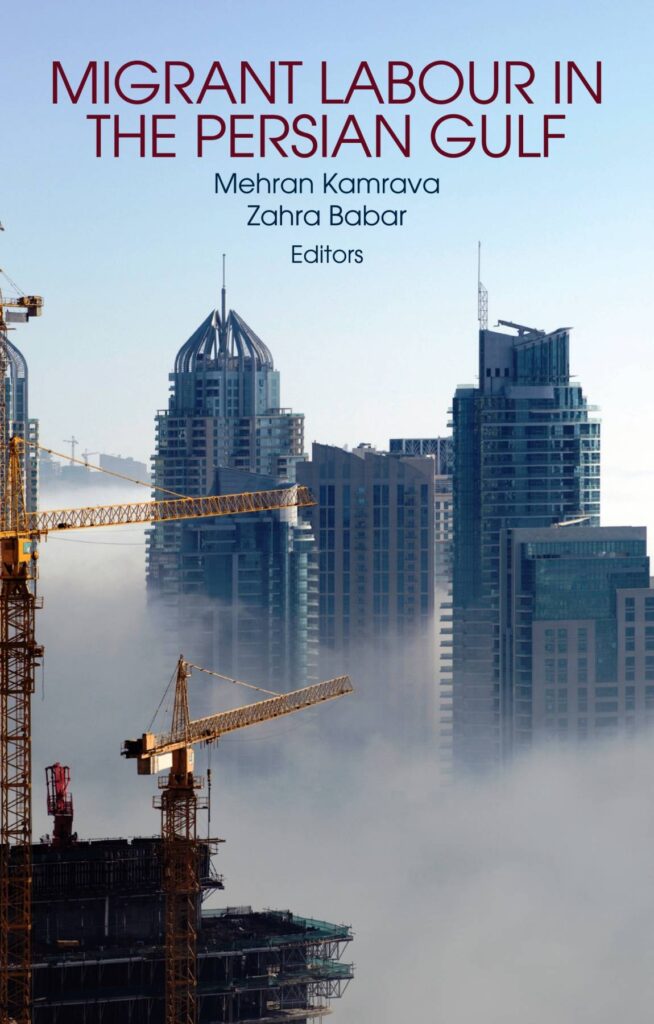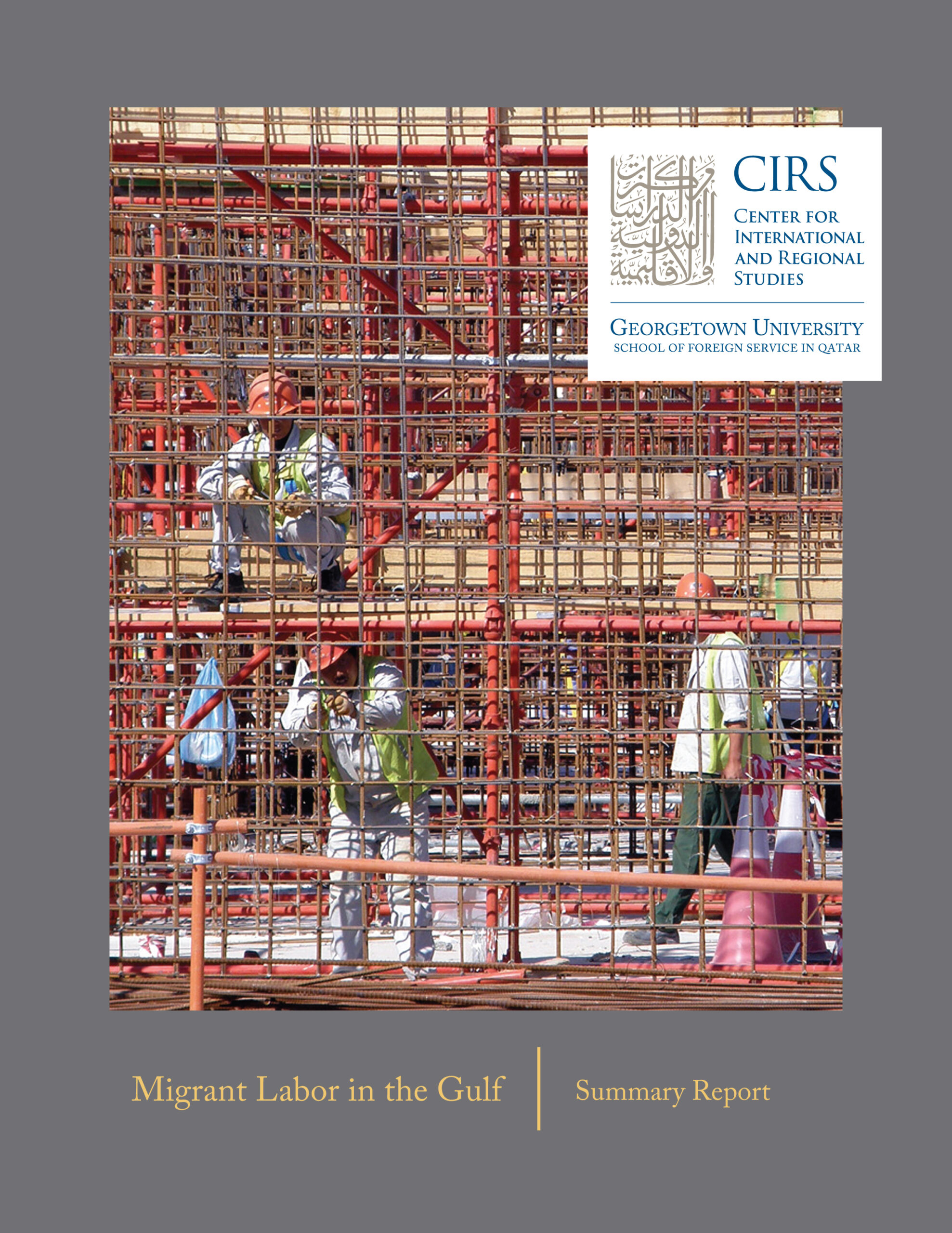Publications

Book

Mehran Kamrava and Zahra Babar, eds., Migrant Labor in the Persian Gulf (Columbia University Press/Hurst, 2012).
In some countries of the Persian Gulf as much as 85 to 90 percent of the population is made-up of expatriate workers. Unsurprisingly, all of the concerned states spend inordinate amounts of their political energies managing the armies of migrant laborers employed in their countries, and there are equally fundamental social, cultural, and economic consequences involved as well. Empirically rich and theoretically informed, this book presents a comprehensive examination of the conditions, priorities, and networks of migrant workers in the Persian Gulf. Read more from Hurst Publishers.
Summary Report

“Migrant Labor in the Gulf,” CIRS Summary Report no. 2 (Doha, Qatar: Center for International and Regional Studies, 2011).
In some countries of the Persian Gulf as much as 85 to 90 per cent of the population is made-up of expatriate workers.Unsurprisingly, all of the concerned states spend inordinate amounts of their political energies managing the armies of migrant labourers employed in their countries, and there are equally fundamental social, cultural, and economic consequences involved as well. Despite the pervasive and farreaching nature of the phenomenon, to date there have not been any comprehensive, easily accessible studies of labour migration in the Persian Gulf. Migrant Labour in the Persian Gulf is a multi-disciplinary examination of the manifold causes, nature, processes, and consequences of labour migration into the Persian Gulf. It critically analyses the effects of migration for native communities, looking at the types and functions of informal and at times formal bi-national and multinational networks that emerge from and in turn sustain migration patterns over time, the role and functions of recruitment agencies, and the values, behaviours, and plans of migrants workers prior to and after setting off for the Persian Gulf.